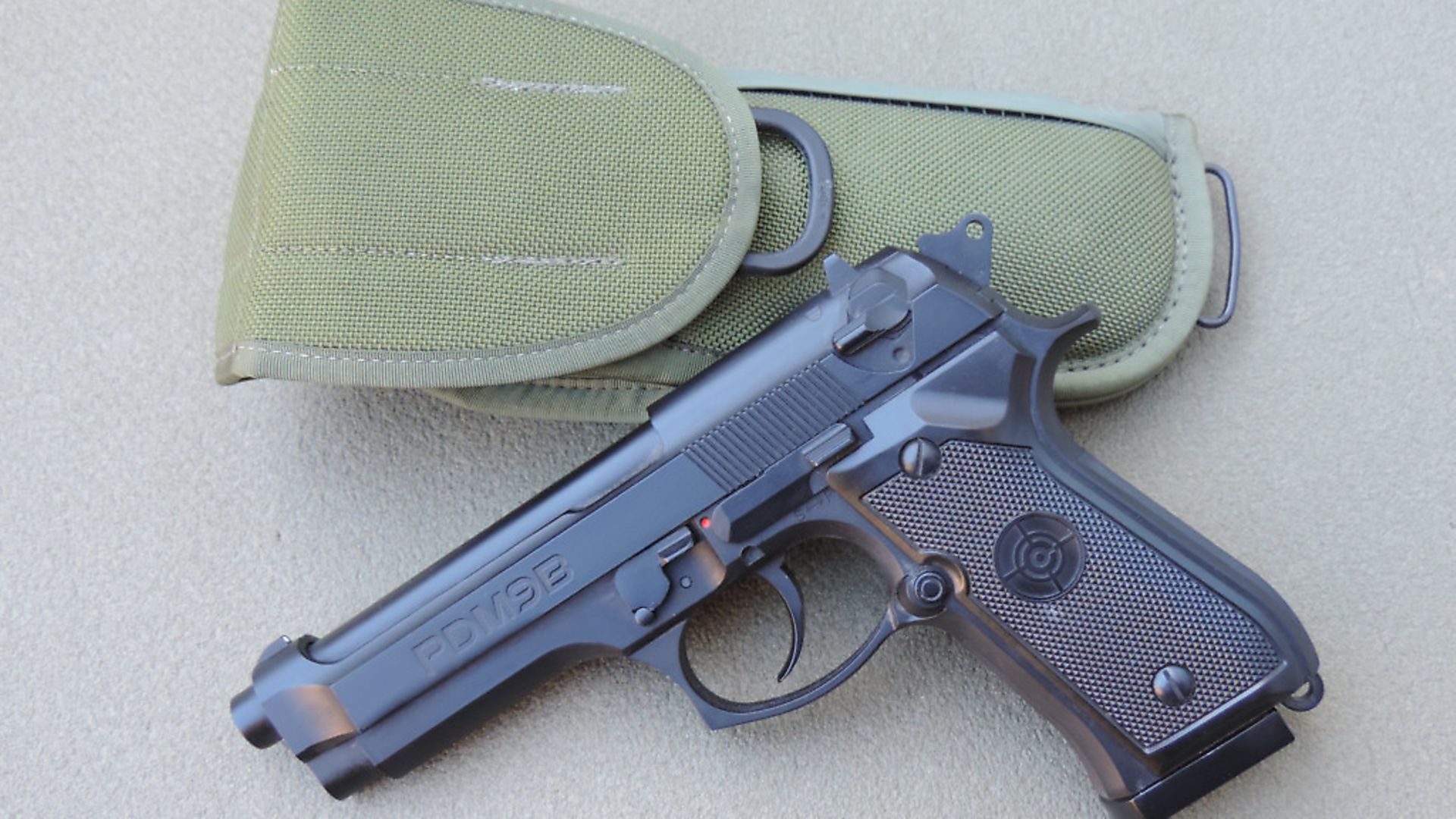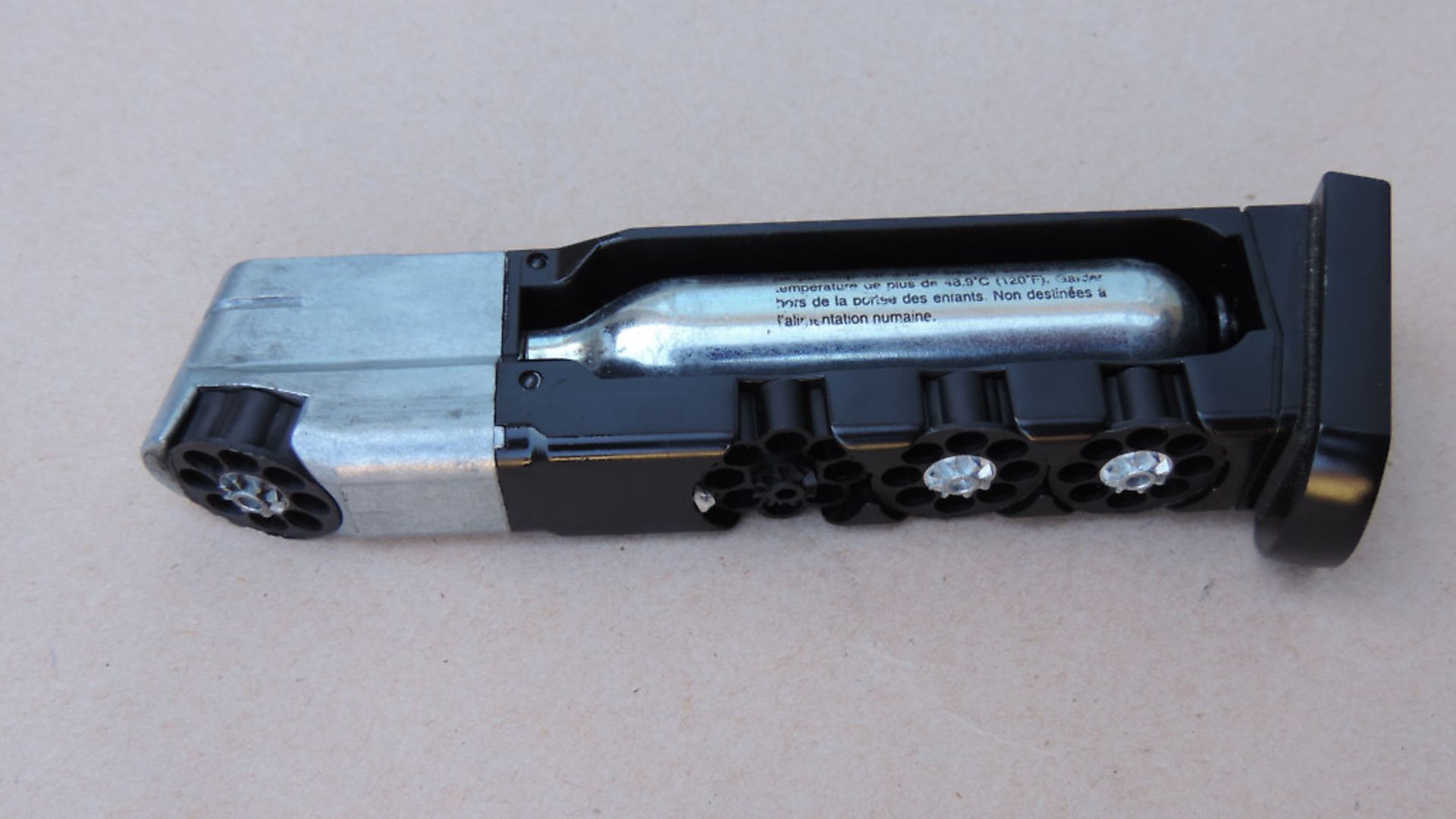John Milewski tests the versatile Crosman PDM9B
 credit: Archant
credit: Archant
Many CO2 air pistol designs are a compromise between performance and authenticity, so you might have a pistol authentic down to the last detail, but low on power, or only capable of shooting BBs through an unrifled barrel. Alternatively, there are slightly less authentic-looking pistols that offer superior performance levels and the PDM9B falls into the latter category.
History
This offering from Crosman externally resembles the Beretta 92, or M9 as it is termed in U.S. military service. The M9 (9 for its 9 mm calibre) replaced the venerable .45 calibre M1911 during the mid 1980s and was the U.S. army’s service pistol until 2017. After more than 70 years in service, the 1911s in U.S. service were showing their age by the 1980s and the army was looking for a lower powered pistol with a higher capacity magazine. Granted, the .45 calibre of the 1911 required a greater level of skill from its operator to get the best from it, but the round had a solid reputation for stopping an adversary sooner than any other service calibre. The Beretta was a solid replacement and saw service all around the world during its three decades in service before being itself replaced by the M17 Sig Sauer P320 in, you guessed it, 2017.
 credit: Archant
credit: Archant
Authencity
The markings on the PDM9B are not as authentic as those on some other CO2 pistols, but the Crosman does have a blow-back action and is capable of firing pellets as well as ball. The slide-mounted safety catch is a non-operable moulding and the actual safety is built into what would be the slide release catch on the original.
The PDM9B scores points over its contemporaries with its ability to shoot pellets through a rifled barrel, and the pistol I tested was capable of groups smaller than those produced by BB-only CO2 pistols. Muzzle velocity was around 400 FPS, which is significantly higher than the average 300 – 320 FPS most BB firing blow-backs produce.
 credit: Archant
credit: Archant
Versatile
In fact, the PDM9B is a very versatile pistol. Its magazine houses the CO2 capsule and an 8-shot magazine along with three spare 8-shot magazines. One of the mag’s is intended for 4.4 mm ball, whilst the others are capable of accepting pellets. The mag’s cannot be stored loaded in situ, but it is a pleasant change to find a pistol coming with four magazines as standard.
Once a fresh magazine has been loaded, the first shot may be fired double or single action if the slide is racked back and released. The hammer may also be cocked manually at any time. The slide does not hold back once the last shot in a magazine has been fired and continues to cock the hammer, so it is worth counting your shots to avoid wasting gas. I was able to discharge nine magazines before the power was reduced to the extent when the blow-back action would no longer cock the hammer.
 credit: Archant
credit: Archant
Handling
This is a full-sized pistol with an ample-sized grip. I found a two-handed grip to be more practical than a single-handed hold because it was easier to control the recoil created by the slide re-cocking the hammer. The double-action pull was long but predictable, whilst the single action broke with a small amount of creep.
The sights are both fixed on the PDM9B and this means you will have to aim off if the pistol does not shoot to the point of aim, which was the case with the test example. However, the high visibility, white dot sights were easy to acquire and rather than aiming off, I placed the foresight’s dot immediately next to and almost touching the right dot. This was to overcome the pistol’s tendency to shoot left by several inches. Elevation was fine and once I adjusted my aim laterally, I was able to obtain some tight groups as well as multiple hits when dismembering tin cans with pellets.
 credit: Archant
credit: Archant
Results
I had some 4.5mm Gamo lead ball left over from a previous test and found this to be accurate enough to hit a tin can placed 10 metres away with almost every shot. The sight picture had to be required after every shot due to the light recoil, and I found it harder to maintain my adapted sight picture of two dots almost touching than I normally would. I am so used to centring a foresight within the ‘U’ of a rearsight that I found myself having to deliberately in order to hit targets. This was not impossible though, and good hits soon encouraged me to maintain this adapted sight picture. JSB roundheads and Xcite flatheads provided better accuracy and felt punchier, too, when used against marauding tin cans, hence either would be my pellet of choice in this pistol.
The PDM9B is a not a typical pistol found in most gun shops and might require searching out. I obtained mine from Protek Supplies in Bognor Regis and needless to say, bought it after the test. If you’re willing to sacrifice a little authenticity for superior performance, this pistol is worth a good look.
 credit: Archant
credit: Archant
__________________________________________________
Behind the scenes: The Crosman Corporation
Gun test: Crosman Phantom II Kit